-
 Bitcoin
Bitcoin $106,754.6083
1.33% -
 Ethereum
Ethereum $2,625.8249
3.80% -
 Tether USDt
Tether USDt $1.0001
-0.03% -
 XRP
XRP $2.1891
1.67% -
 BNB
BNB $654.5220
0.66% -
 Solana
Solana $156.9428
7.28% -
 USDC
USDC $0.9998
0.00% -
 Dogecoin
Dogecoin $0.1780
1.14% -
 TRON
TRON $0.2706
-0.16% -
 Cardano
Cardano $0.6470
2.77% -
 Hyperliquid
Hyperliquid $44.6467
10.24% -
 Sui
Sui $3.1128
3.86% -
 Bitcoin Cash
Bitcoin Cash $455.7646
3.00% -
 Chainlink
Chainlink $13.6858
4.08% -
 UNUS SED LEO
UNUS SED LEO $9.2682
0.21% -
 Avalanche
Avalanche $19.7433
3.79% -
 Stellar
Stellar $0.2616
1.64% -
 Toncoin
Toncoin $3.0222
2.19% -
 Shiba Inu
Shiba Inu $0.0...01220
1.49% -
 Hedera
Hedera $0.1580
2.75% -
 Litecoin
Litecoin $87.4964
2.29% -
 Polkadot
Polkadot $3.8958
3.05% -
 Ethena USDe
Ethena USDe $1.0000
-0.04% -
 Monero
Monero $317.2263
0.26% -
 Bitget Token
Bitget Token $4.5985
1.68% -
 Dai
Dai $0.9999
0.00% -
 Pepe
Pepe $0.0...01140
2.44% -
 Uniswap
Uniswap $7.6065
5.29% -
 Pi
Pi $0.6042
-2.00% -
 Aave
Aave $289.6343
6.02%
What does it mean when the short-term RSI breaks through 50 but the long-term RSI does not move in the RSI indicator?
When short-term RSI crosses above 50 but long-term RSI remains flat, it signals a potential short-term bullish shift without confirming a broader trend reversal.
Jun 20, 2025 at 10:42 am
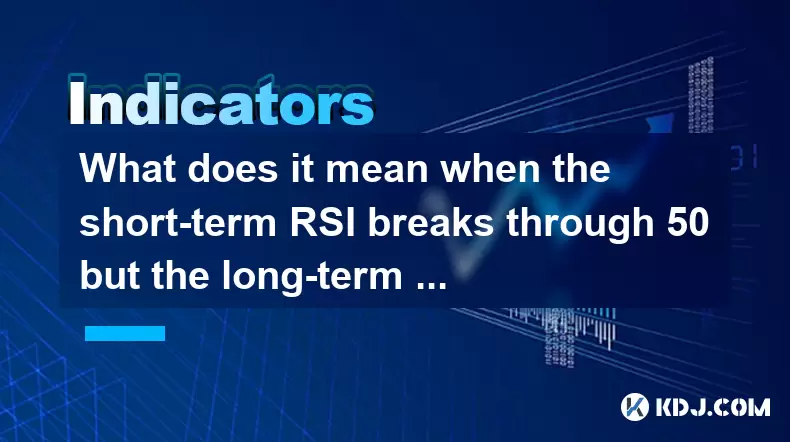
Understanding the RSI Indicator and Its Dual-Term Application
The Relative Strength Index (RSI) is a widely used momentum oscillator in technical analysis, primarily for identifying overbought or oversold conditions in an asset’s price movement. It typically operates on a scale from 0 to 100, with levels above 70 considered overbought and below 30 considered oversold. However, when analyzing cryptocurrency markets, traders often apply both short-term and long-term RSI settings to gain a more nuanced understanding of market dynamics.
Short-term RSI, usually set at 14 periods, reflects immediate price action and reacts quickly to changes in market sentiment. Long-term RSI, often calculated over 50 or 100 periods, provides a broader view of the underlying trend. When the short-term RSI breaks through 50 but the long-term RSI remains stagnant or unaffected, it signals a potential shift in short-term momentum without confirming a change in the larger trend.
What Does the RSI Level of 50 Indicate?
In RSI interpretation, the 50 level serves as a neutral zone. Crossing above 50 suggests that bullish momentum is gaining strength, while falling below 50 indicates bearish pressure. This threshold helps traders assess whether buyers or sellers are currently in control of the market.
When the short-term RSI crosses above 50, especially after being in oversold territory, it may suggest that buying pressure is increasing and a reversal could be imminent. However, if the long-term RSI does not follow this move, it implies that the broader market structure remains unchanged. This divergence can be particularly insightful in cryptocurrency trading, where volatility often creates rapid shifts in short-term sentiment.
Why Would Short-Term RSI React Differently From Long-Term RSI?
Cryptocurrency markets are known for their high volatility and frequent sharp corrections. The short-term RSI responds immediately to these fluctuations, often reflecting emotional or reactionary trading behavior. In contrast, the long-term RSI smooths out these movements and focuses on the overall trend direction.
For example, during a strong downtrend, a sudden rally might push the short-term RSI above 50, signaling a possible bounce. But if the long-term RSI remains below 50, it suggests that the rally lacks sufficient strength to alter the dominant bearish trend. Traders should interpret such scenarios with caution, as they might represent false breakouts or temporary relief rallies rather than sustainable reversals.
How to Interpret This Scenario in Crypto Trading?
When you observe that the short-term RSI has crossed above 50 but the long-term RSI shows no significant movement, consider the following:
- Confirming Volume: Check if the breakout in the short-term RSI is accompanied by increased volume. A lack of volume may indicate weak participation.
- Price Action Context: Is the price breaking key resistance levels? If not, the move may lack conviction.
- Timeframe Analysis: Ensure you're interpreting the indicator across multiple timeframes. A 4-hour chart showing RSI above 50 may still align with a daily chart RSI below 50, indicating conflicting signals.
- Correlation with Broader Market: Sometimes, individual cryptocurrencies react differently than the broader market. Assess whether altcoins or Bitcoin are leading the move.
This situation often occurs during consolidation phases or ahead of major news events, where traders speculate on potential moves without committing substantial capital.
What Are the Practical Implications for Traders?
Traders can use this divergence between short-term and long-term RSI to refine their entry and exit strategies:
- Avoid FOMO Trades: Just because the short-term RSI crosses above 50 doesn’t mean you should jump into a trade. Wait for confirmation from other indicators or timeframes.
- Use Risk Management Tools: Set stop-loss orders and limit entries to predefined zones where the long-term trend may offer support or resistance.
- Combine With Other Indicators: Use moving averages or MACD to confirm whether the momentum suggested by the short-term RSI has legs.
- Watch for Crossovers: Monitor if the long-term RSI eventually follows the short-term RSI above 50, which could signal a more robust trend change.
In crypto trading, where pump-and-dump schemes and whale activities are common, relying solely on short-term RSI signals can lead to costly mistakes.
Case Study: BTC/USDT Weekly vs Daily RSI Behavior
Let's examine a real-world scenario using Bitcoin (BTC/USDT):
- On the daily chart, the long-term RSI (set to 50 periods) remains below 50, indicating persistent bearish dominance.
- Meanwhile, on the 4-hour chart, the short-term RSI (14-period) briefly rises above 50 following a minor positive tweet from a prominent figure in the crypto space.
- Despite the short-term optimism, the price fails to break above a key resistance level, and the RSI soon retreats back below 50.
This case illustrates how market sentiment can temporarily lift the short-term RSI, yet institutional selling pressure or broader macroeconomic factors keep the long-term RSI subdued.
Frequently Asked Questions
Q: Can I rely solely on RSI for trading decisions in crypto?
A: While RSI is a powerful tool, it works best when combined with other indicators like volume, moving averages, and price patterns. Relying only on RSI can lead to false signals, especially in highly volatile crypto markets.
Q: What timeframes are best suited for short-term and long-term RSI settings?
A: Short-term RSI is commonly set at 14 periods on intraday charts (e.g., 1-hour or 4-hour), while long-term RSI uses settings like 50 or 100 periods on daily or weekly charts.
Q: How do I identify a false breakout in short-term RSI?
A: Look for a lack of volume confirmation, failure to break key price levels, or divergence with higher timeframe indicators. Also, check if the long-term RSI contradicts the short-term signal.
Q: Should I ignore trades when the long-term RSI doesn’t confirm the short-term move?
A: Not necessarily. You can take smaller positions with tight stops, but always assess the broader context before committing significant capital.
Disclaimer:info@kdj.com
The information provided is not trading advice. kdj.com does not assume any responsibility for any investments made based on the information provided in this article. Cryptocurrencies are highly volatile and it is highly recommended that you invest with caution after thorough research!
If you believe that the content used on this website infringes your copyright, please contact us immediately (info@kdj.com) and we will delete it promptly.
- Filecoin, Secure Storage, and Avalanche Enterprises: A New Era of Blockchain Collaboration
- 2025-06-20 14:45:13
- SEI Price Surge: Decoding the Reasons Behind the Rise
- 2025-06-20 14:25:12
- Cryptos for the Long Haul: Early Investors' Edge in 2025
- 2025-06-20 14:25:12
- Bitcoin Price in June 2025: Riding the $100K Wave?
- 2025-06-20 14:45:13
- Bitcoin Cash (BCH) Momentum: Riding the Wave of Geopolitical Uncertainty
- 2025-06-20 14:50:12
- Crypto, Bitcoin, and Uptime: Decoding the Latest Trends and Insights
- 2025-06-20 14:50:12
Related knowledge

Is it a real drop when KDJ crosses but the trading volume shrinks?
Jun 20,2025 at 03:49pm
Understanding KDJ and Its Role in Cryptocurrency TradingIn the realm of cryptocurrency trading, technical analysis plays a crucial role in identifying potential price movements. The KDJ indicator, also known as the stochastic oscillator with a J line added for momentum confirmation, is widely used by traders to gauge overbought or oversold conditions. I...
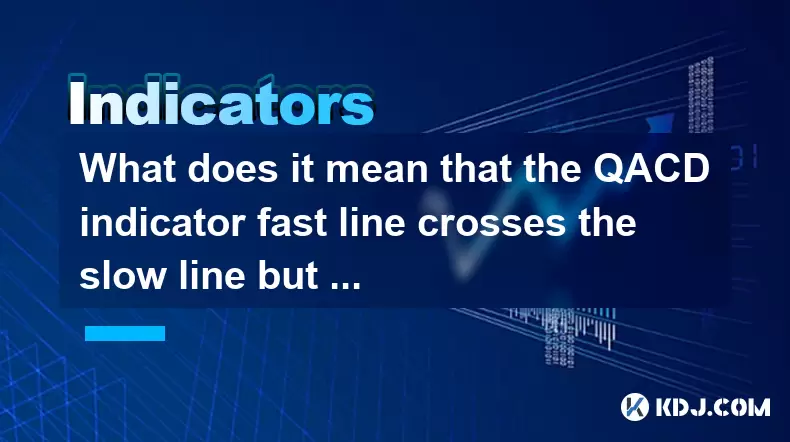
What does it mean that the QACD indicator fast line crosses the slow line but does not increase in volume?
Jun 20,2025 at 12:22pm
Understanding the QACD Indicator and Its ComponentsThe QACD (Quantitative Accumulation Convergence Divergence) indicator is a technical analysis tool used by traders to identify potential trend reversals, momentum shifts, and entry or exit points in cryptocurrency markets. It consists of two primary lines: the fast line, which reacts more quickly to pri...
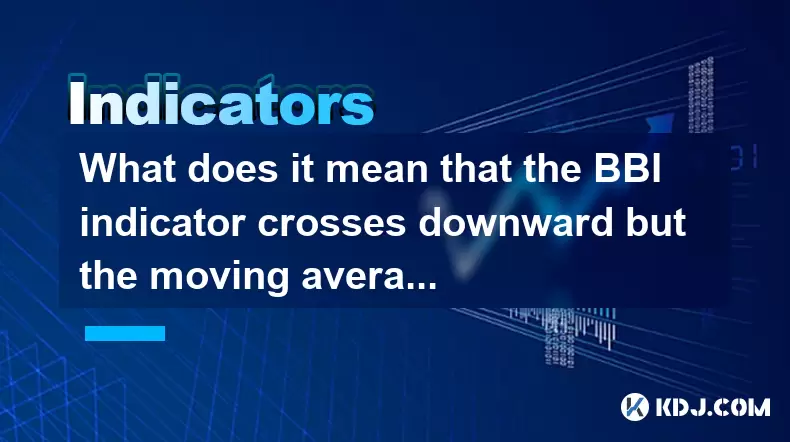
What does it mean that the BBI indicator crosses downward but the moving average does not cross?
Jun 20,2025 at 03:07pm
Understanding the Role of Blockchain in Cryptocurrency TransactionsBlockchain technology is the foundational infrastructure behind most cryptocurrencies. It serves as a decentralized, distributed ledger that records all transactions across a network of computers. This ensures transparency and eliminates the need for a central authority like a bank. Each...

What does it mean when the short-term RSI breaks through 50 but the long-term RSI does not move in the RSI indicator?
Jun 20,2025 at 10:42am
Understanding the RSI Indicator and Its Dual-Term ApplicationThe Relative Strength Index (RSI) is a widely used momentum oscillator in technical analysis, primarily for identifying overbought or oversold conditions in an asset’s price movement. It typically operates on a scale from 0 to 100, with levels above 70 considered overbought and below 30 consid...
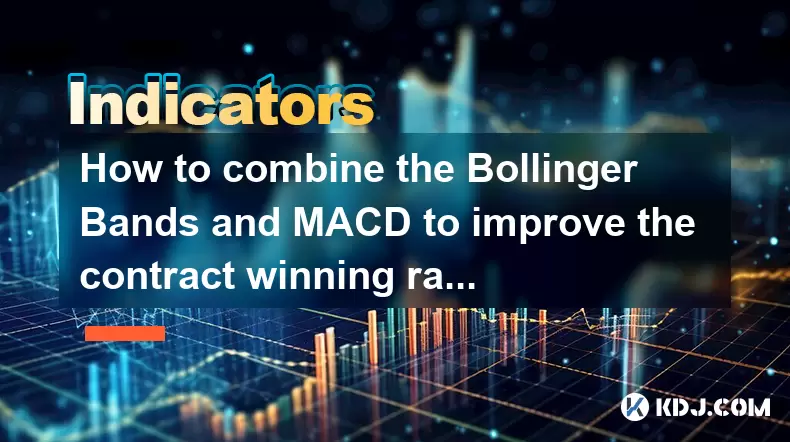
How to combine the Bollinger Bands and MACD to improve the contract winning rate?
Jun 19,2025 at 06:35pm
Understanding Bollinger Bands and MACD IndicatorsTo effectively combine Bollinger Bands and the MACD (Moving Average Convergence Divergence), it's essential to first understand what each indicator represents. Bollinger Bands consist of a middle moving average line and two outer bands that adjust based on market volatility. When prices move toward the up...
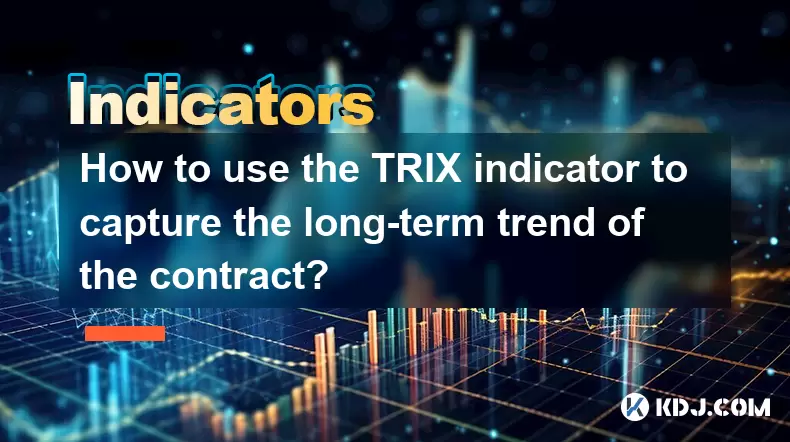
How to use the TRIX indicator to capture the long-term trend of the contract?
Jun 20,2025 at 09:14am
What Is the TRIX Indicator?The TRIX (Triple Exponential Average) indicator is a momentum oscillator used to identify oversold and overbought conditions, as well as potential trend reversals in financial markets. It is calculated by applying a triple exponential moving average to price data and then taking the percentage rate of change of that smoothed v...

Is it a real drop when KDJ crosses but the trading volume shrinks?
Jun 20,2025 at 03:49pm
Understanding KDJ and Its Role in Cryptocurrency TradingIn the realm of cryptocurrency trading, technical analysis plays a crucial role in identifying potential price movements. The KDJ indicator, also known as the stochastic oscillator with a J line added for momentum confirmation, is widely used by traders to gauge overbought or oversold conditions. I...

What does it mean that the QACD indicator fast line crosses the slow line but does not increase in volume?
Jun 20,2025 at 12:22pm
Understanding the QACD Indicator and Its ComponentsThe QACD (Quantitative Accumulation Convergence Divergence) indicator is a technical analysis tool used by traders to identify potential trend reversals, momentum shifts, and entry or exit points in cryptocurrency markets. It consists of two primary lines: the fast line, which reacts more quickly to pri...

What does it mean that the BBI indicator crosses downward but the moving average does not cross?
Jun 20,2025 at 03:07pm
Understanding the Role of Blockchain in Cryptocurrency TransactionsBlockchain technology is the foundational infrastructure behind most cryptocurrencies. It serves as a decentralized, distributed ledger that records all transactions across a network of computers. This ensures transparency and eliminates the need for a central authority like a bank. Each...

What does it mean when the short-term RSI breaks through 50 but the long-term RSI does not move in the RSI indicator?
Jun 20,2025 at 10:42am
Understanding the RSI Indicator and Its Dual-Term ApplicationThe Relative Strength Index (RSI) is a widely used momentum oscillator in technical analysis, primarily for identifying overbought or oversold conditions in an asset’s price movement. It typically operates on a scale from 0 to 100, with levels above 70 considered overbought and below 30 consid...

How to combine the Bollinger Bands and MACD to improve the contract winning rate?
Jun 19,2025 at 06:35pm
Understanding Bollinger Bands and MACD IndicatorsTo effectively combine Bollinger Bands and the MACD (Moving Average Convergence Divergence), it's essential to first understand what each indicator represents. Bollinger Bands consist of a middle moving average line and two outer bands that adjust based on market volatility. When prices move toward the up...

How to use the TRIX indicator to capture the long-term trend of the contract?
Jun 20,2025 at 09:14am
What Is the TRIX Indicator?The TRIX (Triple Exponential Average) indicator is a momentum oscillator used to identify oversold and overbought conditions, as well as potential trend reversals in financial markets. It is calculated by applying a triple exponential moving average to price data and then taking the percentage rate of change of that smoothed v...
See all articles

























































































